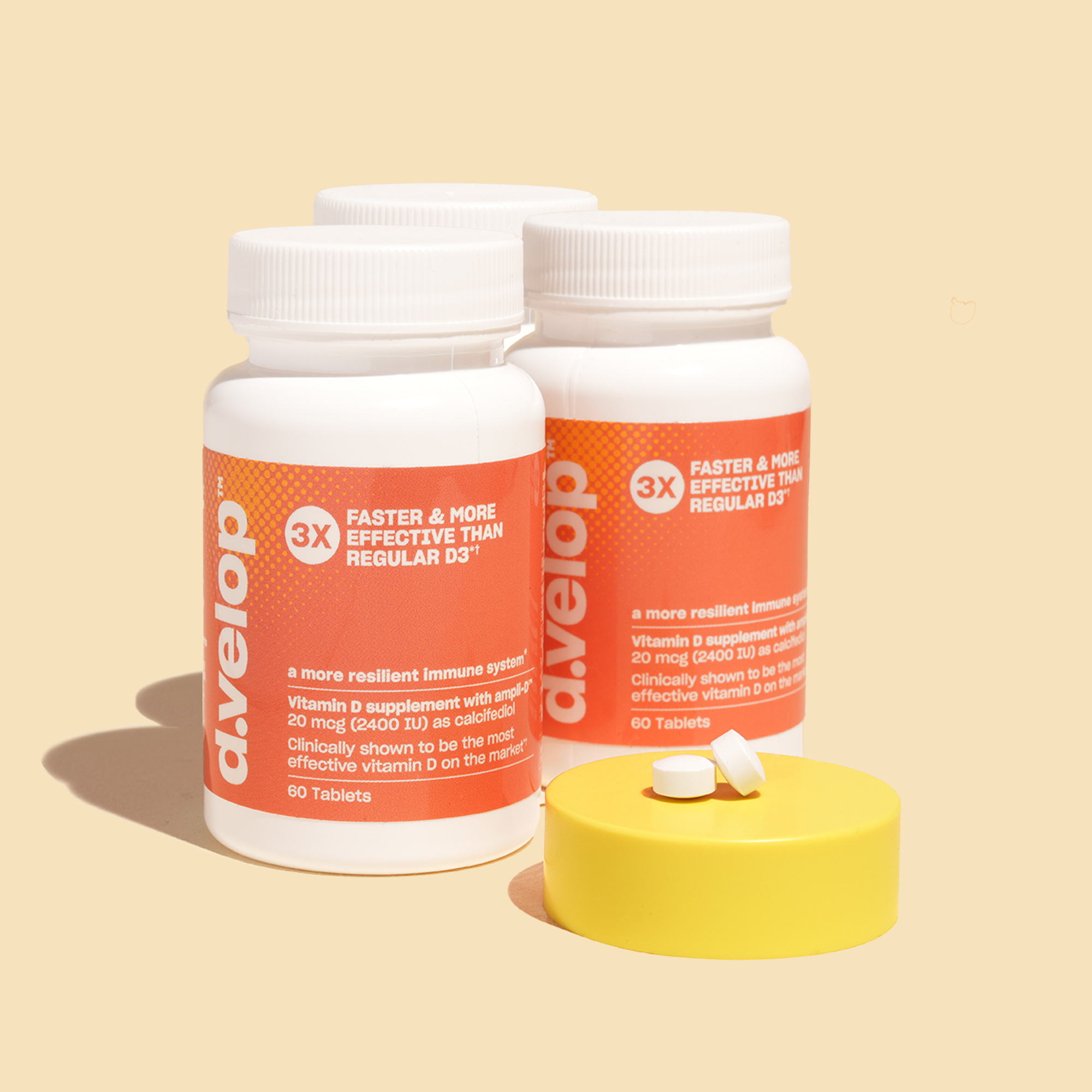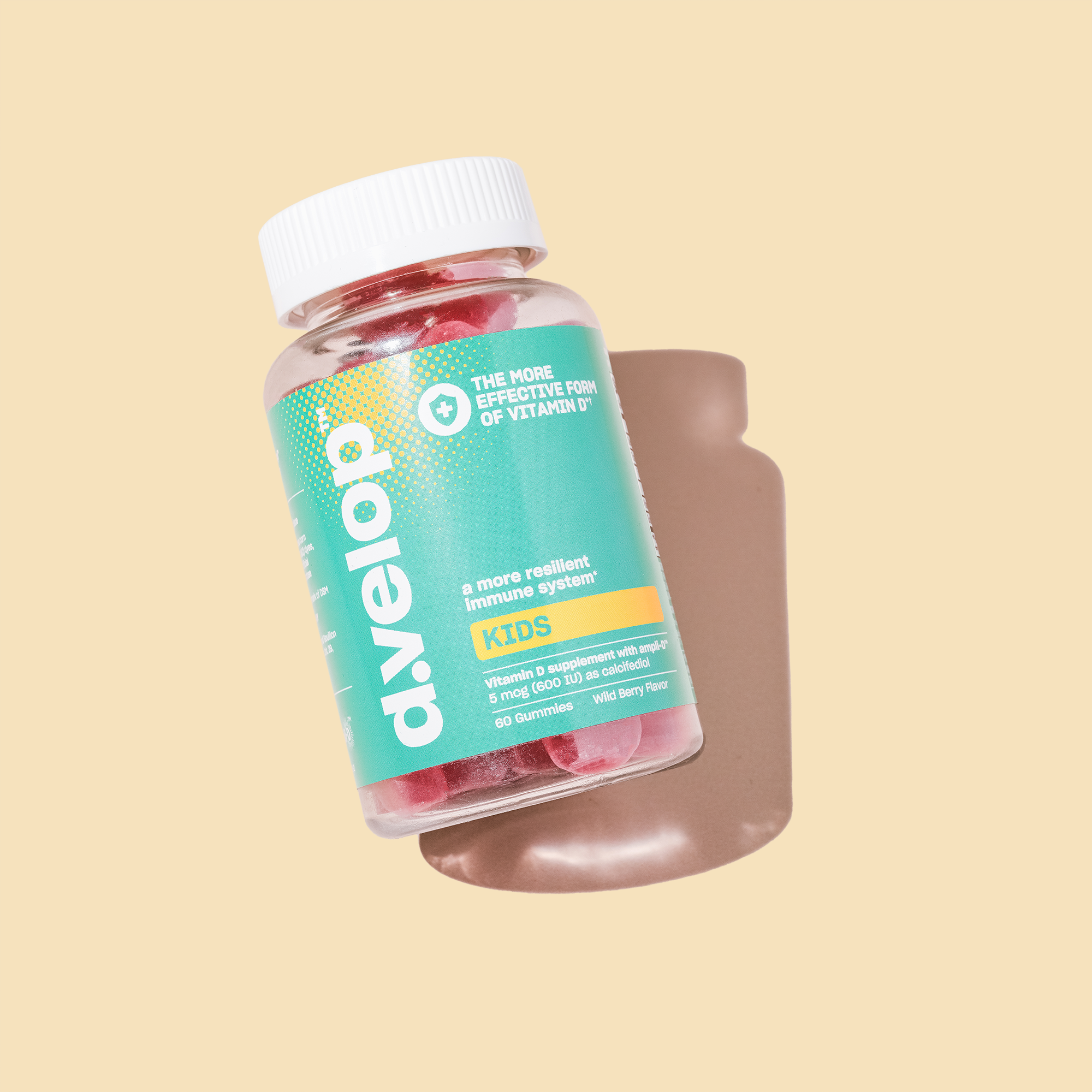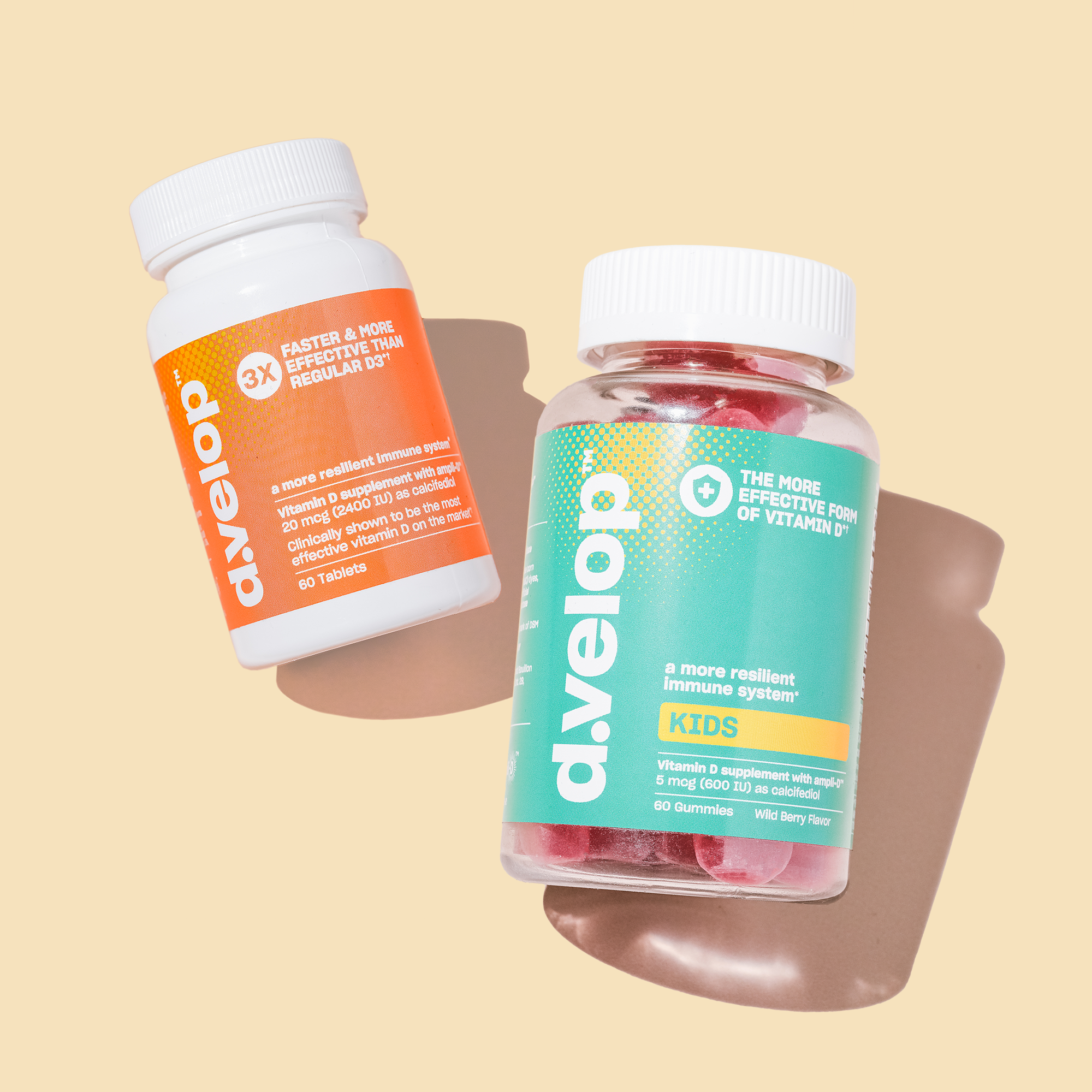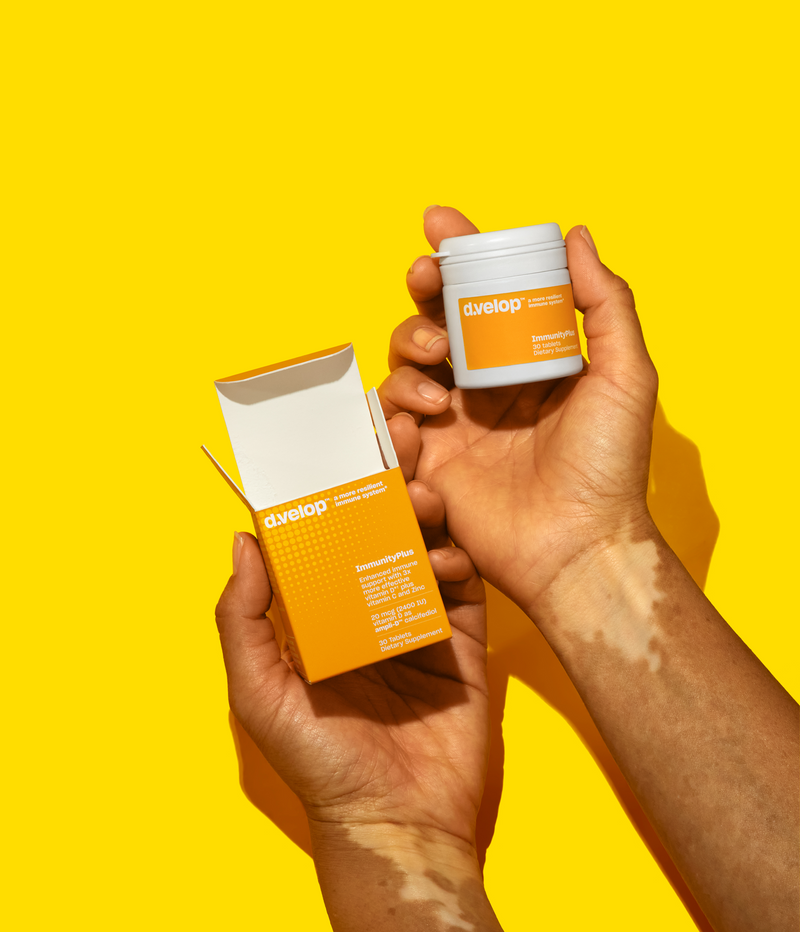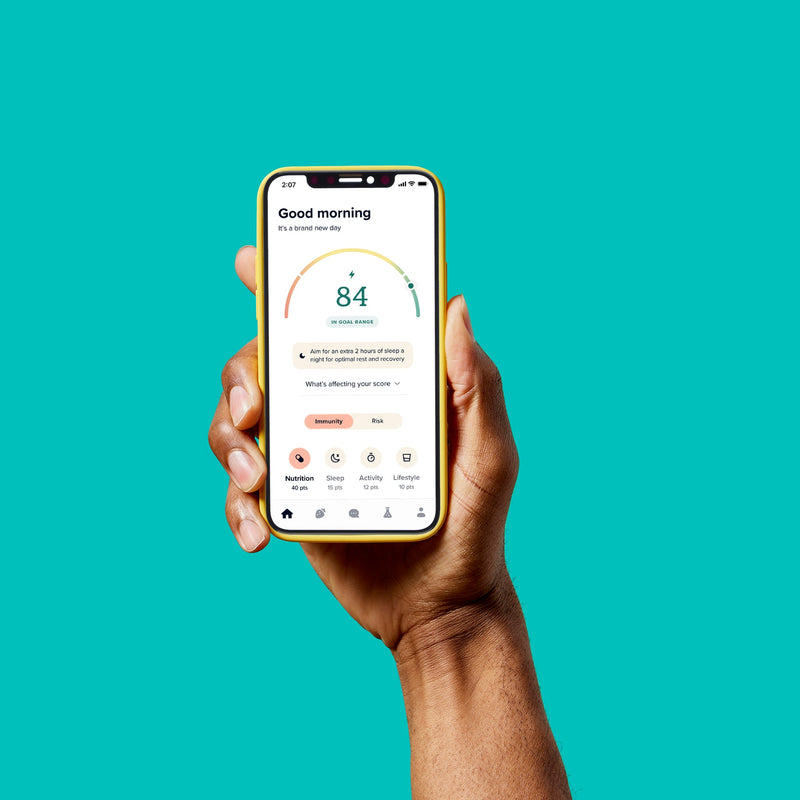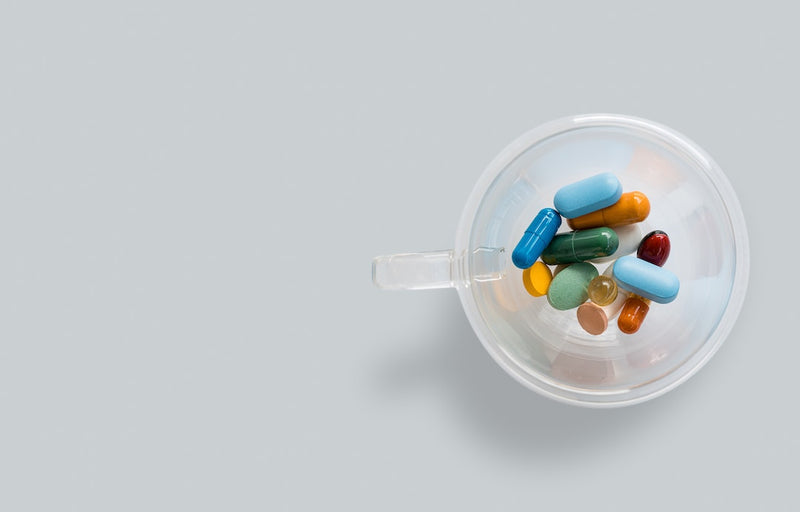Vitamin D’s Importance
Part of your body’s abilities to function properly and fight off oncoming diseases are based on having adequate levels of vitamin D. The exact amount of vitamin D that is best for each person varies. Hence, it is important to understand one’s personal situation to make sure that their vitamin D levels are adequate to maintain overall immune health.
There are a handful of benefits that come with having sufficient vitamin D levels. One important fact about vitamin D is that it is a fat soluble vitamin, meaning that it can be stored in fat tissue and used later.
There are many other advantages that come with getting enough vitamin D, but to boil it down, vitamin D essentially works hard to help us maintain overall physical and immune health.
Bones, Teeth, Muscle Health:
Vitamin D is responsible for helping your body absorb nutrients, such as calcium and phosphorus. As vitamin D plays a critical role in calcium absorption and regulation, it’s no wonder that it holds well known roles in bone, teeth, and muscular health.
Immune Support:
Vitamin D also helps make sure our immune system has what it needs to be able to protect the body from “invaders” like bacteria, viruses and other pathogens. Without adequate vitamin D levels, our immune cells won’t have enough of a “signal” to best protect our bodies. The d.velop™ ImmunityPlus supplement offers the best of both worlds: the most effective vitamin D supplement on the market alongside vitamin C and zinc for a trifecta of immunity support.
Vitamin D Deficiencies
Vitamin D deficiencies don’t always come along with symptoms, but even if they do, sometimes these symptoms are more subtle and difficult to pinpoint. The most common symptoms one might notice could be muscle weakness, bone or joint pain, depression, and fatigue. More severe symptoms may arise if a vitamin D deficiency is left unchecked, such as osteoporosis or rickets.
You may be asking, if I don’t have those symptoms how might I know if I have a vitamin D deficiency? The only way to know your vitamin D levels is by taking a vitamin D test. We offer a vitamin D test kit to check your levels in the comfort of your own home.
If your vitamin D test results come back low, consider incorporating more vitamin D into your life through diet and supplementation. We always recommend speaking with your doctor about your vitamin D levels, and to see what routine would be best based on your personal health.
Curious if your lifestyle may be leading to lower vitamin D levels? Take our quick vitamin D deficiency quiz to learn more.
How to Increase Vitamin D Levels Quickly
If you’ve discovered that your vitamin D levels are low, or if you’re concerned about your immune health, it may be time to take some concrete steps towards raising your vitamin D levels. There are three key ways you can begin to increase your vitamin D levels: sunlight, food and supplements.
1. Food
There aren’t many foods that are naturally full of vitamin D to help you raise those low levels. Foods that are naturally rich in vitamin D can include fatty fish (such as salmon, tuna, or mackerel), cheese and egg yolks. With such a short list of foods high in vitamin D, many brands fortify, or specifically incorporate vitamin D into their products. Some popular fortified foods in the U.S. include orange juice, cereal, yogurt, milk, and oatmeal. Incorporating these foods into your diet, may help your levels to steadily climb and strengthen your immune system over time.*
RD-Tip:
Vitamin D is a fat-soluble vitamin, which means it needs fat in order to be absorbed and used effectively in the body. Pairing your vitamin D-rich food choice alongside a healthy source of fats can be a great way to make the most of your meals.
Some ideas might be:
- Cereal (vitamin D fortified) with 2% milk
- Tuna salad with olive oil mayonnaise
- Garden salad topped with salmon and olive oil vinaigrette
- Egg and mushroom omelette cooked in butter or olive oil
2. Sunlight
When you spend time outside, your body converts sunlight and UV rays into vitamin D which can be used immediately or in the future.. Regular exposure to sunlight is the main way to incorporate vitamin D into your lifestyle. Current recommendations on how much time you need in the sun to achieve adequate vitamin D levels vary by individual.
Some sources recommend between 10-30 minutes of sunlight exposure (depending on season, skin color, or location), however further research needs to be conducted to determine consistent and safe recommendations. Darker skin tone, the use of sunscreen, or even your age may affect or hinder your body’s ability to absorb the sun's natural rays.
3. Supplements
While food and sunlight are important sources of vitamin D, oftentimes your levels will not climb as rapidly or as efficiently as you might hope. If you’re wondering how to increase vitamin D levels quickly, the short answer is: consider adding supplements into your diet.
When taking supplements, it is important to understand how much is safe and necessary for your body on a daily basis to support overall health. The recommended daily allowance (RDA) for any nutrient you are interested in varies based on your age and life stage.
For vitamin D, both International Units ( IUs) and micrograms (mcg) are used to show how much vitamin D you may need per day. The current RDA is 400 IU (10 mcg) for children up to 12 months of age, 600 IU (15 mcg) for people ages 1-70 daily, 800 IU (20 mcg) for adults over age 70, and 600 IU (15 mcg) for women who are pregnant or breastfeeding. We recommend consulting with your doctor or healthcare provider before starting any dietary supplement.
Timeline for Recovering from a Vitamin D Deficiency
Depending on where your vitamin D levels are to start, it may take months to raise them.* Some supplements, however, are more effective than others. For example, our vitamin D supplements work 3x faster and are 3x more effective at increasing your vitamin D levels than traditional vitamin D supplements.*†
Even if you want to boost your vitamin D levels faster, you should not consume more than the tolerable upper intake level (UL) of the vitamin. Excessive vitamin D intake can have negative effects such as hypercalcemia or nausea.
Say goodbye to deficiency and improve your vitamin D levels today!* If you’re trying to figure out how to increase vitamin D levels quickly, there’s no better supplement to get the job done than d.velop™ vitamin D.*† Check it out!
- Bischoff-Ferrari et al 2006. Estimation of optimal serum concentrations of 25-hydroxyvitamin D for multiple health outcomes. The American Journal of Clinical Nutrition.
- DeLuca, H. F. 1986. The metabolism and functions of vitamin D. Steroid Hormone Resistance, 361-375
- Aranow C. 2011. Vitamin D and the immune system. J Investig Med. 59(6):881-886.
- Bordelon et al. 2009. Recognition and management of vitamin D deficiency. American family physician, 80(8), 841-846.
- Anglin et al. 2013. Vitamin D deficiency and depression in adults: systematic review and meta-analysis. British Journal of Psychiatry. 202(2):100-107.
- Institute of Medicine, Food and Nutrition Board. 2010. Dietary Reference Intakes for Calcium and Vitamin D. Washington, DC: National Academy Press.
- Holick, M. F. 2016. Biological effects of sunlight, ultraviolet radiation, visible light, infrared radiation and vitamin D for health. Anticancer research, 36(3), 1345-1356.
- Moan et al. 2008. Addressing the health benefits and risks, involving vitamin D or skin cancer, of increased sun exposure. Proceedings of the National Academy of Sciences, 105(2), 668-673.
- Baggerly et al. 2015. Sunlight and vitamin D: necessary for public health. Journal of the American College of Nutrition, 34(4), 359-365.
- Hathcock et al. 2007. Risk assessment for vitamin D, The American Journal of Clinical Nutrition, Volume 85, Issue 1, Pages 6–18
